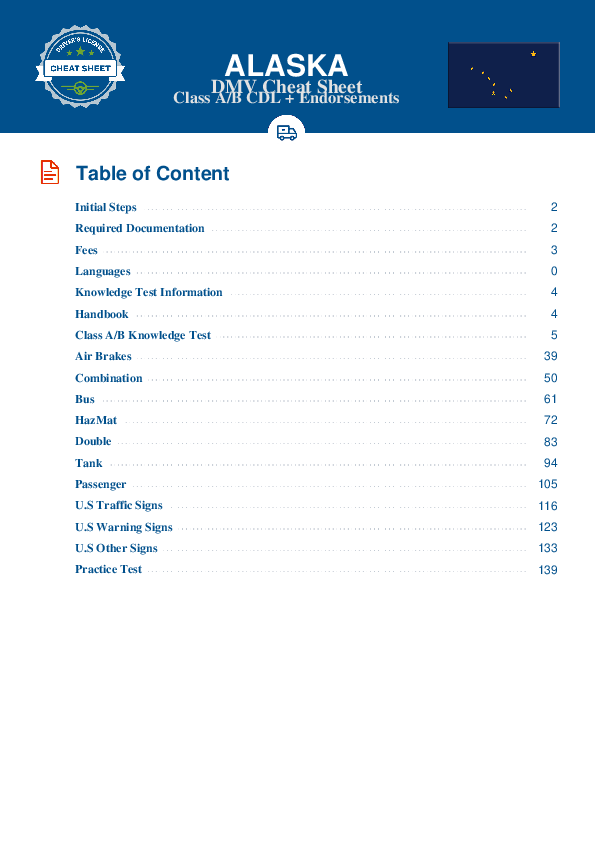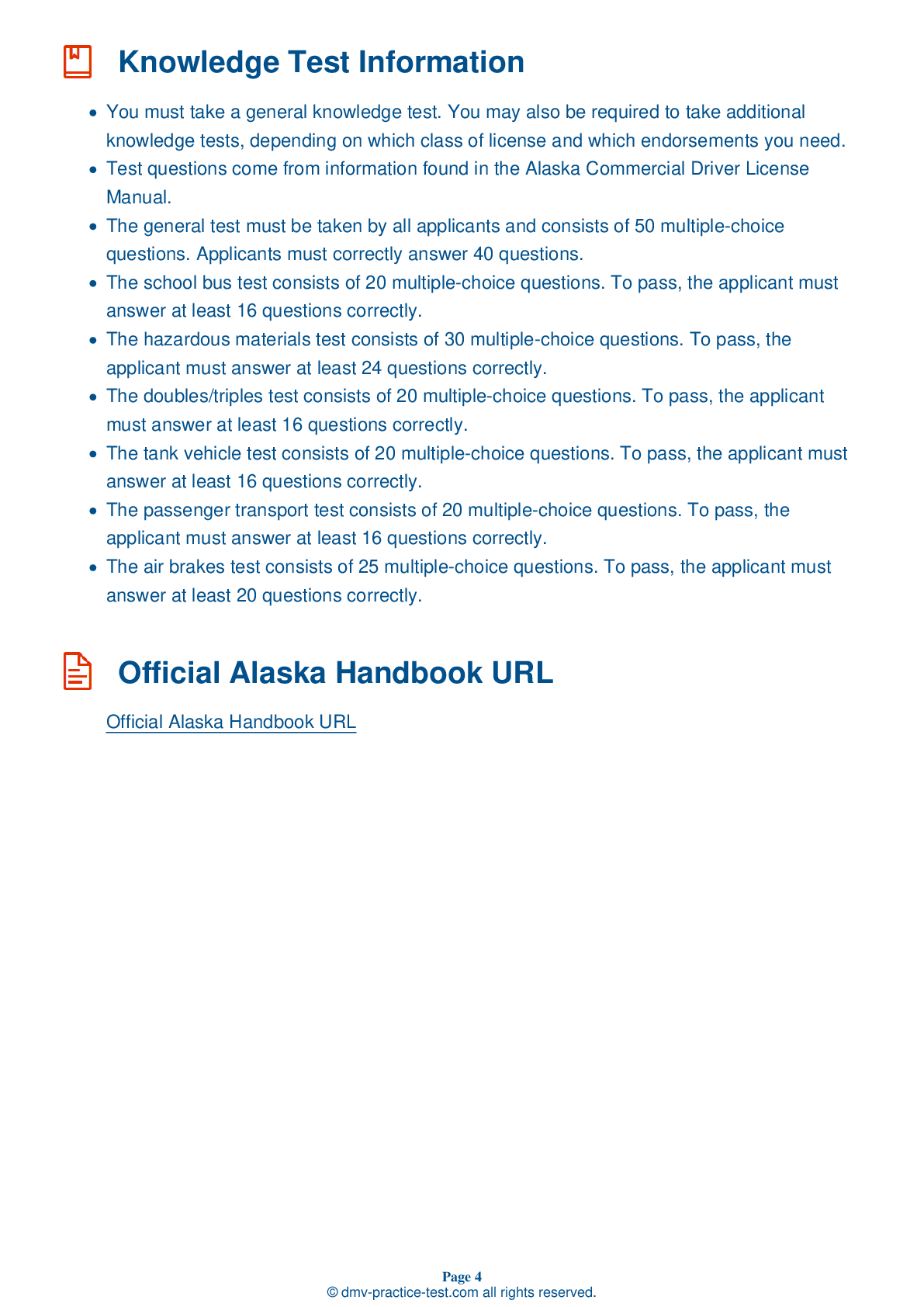Passenger Endorsement | Alaska 2025 #2 Page 2 of 3
Train for FREE with our Alaska CDL passenger endorsement practice test online. The official exam test consists of several obligatory parts, with all of them checking your knowledge of different blocks of road rules. If you need to obtain a AK DMV passenger endorsement in 2025, practice as much as possible. Free sample tests published on our website will help you check and improve your knowledge and boost your grades. Please bear in mind that DMV requirements for issuing a CDL permit with passenger endorsement may vary from state to state.
8 . How can you check hydraulic brakes?
Check hydraulic brakes by pumping the brake pedal three times before applying firm pressure to the pedal for five seconds. The pedal should not move. If it does, there may be a leak or some other problem in the braking system.
9 . Skids caused by acceleration can usually be resolved by:
Skids caused by acceleration frequently occur on slippery road surfaces. These skids can generally be resolved by the driver removing their foot from the accelerator.
10 . If you plan to slow down, you can warn drivers behind you by:
Before slowing down, it is a good idea to flash your brake lights by lightly tapping your brake pedal a few times. This will warn drivers behind you of your plans to slow down.
11 . When making tight maneuvers, it is important for a driver to:
While regular mirror checks should always be part of your driving routine, you should make a particular point of checking the mirrors when changing lanes, turning, merging, or making tight maneuvers.
12 . When traveling at speeds under 40 mph, you should maintain at least ____ of following distance for every 10 feet of your vehicle's length.
When traveling at speeds under 40 mph, you should allow a minimum of one second of following distance for every 10 feet of your vehicle's length. At faster speeds, add at least one additional second.
13 . The minimum acceptable tread depth for rear tires is:
When inspecting your tires, verify that there is at least 4/32 of an inch of tread depth in every major groove on the front tires, and tread depth of at least 2/32 of an inch on the other tires. Tires on the same vehicle should all be the same size.
14 . When stopping, the brake pedal should be:
When stopping, it is best to gradually press down the brake pedal.
See the exact questions that will be on the 2025 Alaska DMV exam.
99.2% of people who use the cheat sheet pass the FIRST TIME
Lillian MCcranie explains how our CDL study guide was helpful in passing the exam and recommends it to everyone.
Cameron tells us how he purchased the CDL exam, and found it to be a useful tool which helped him pass the exam and find a job.



